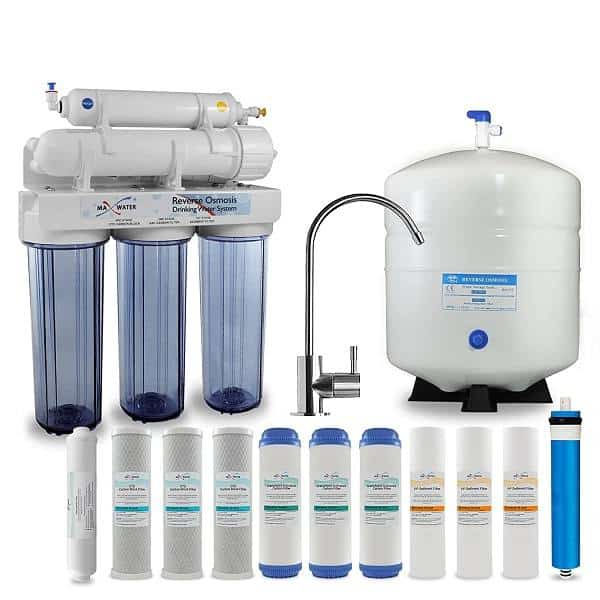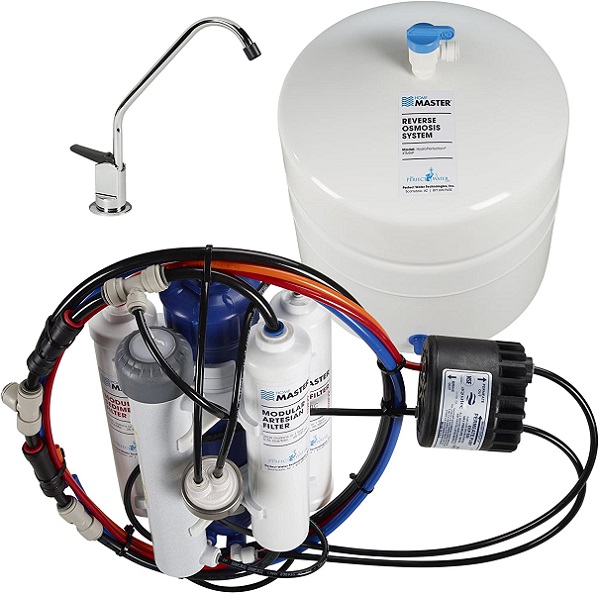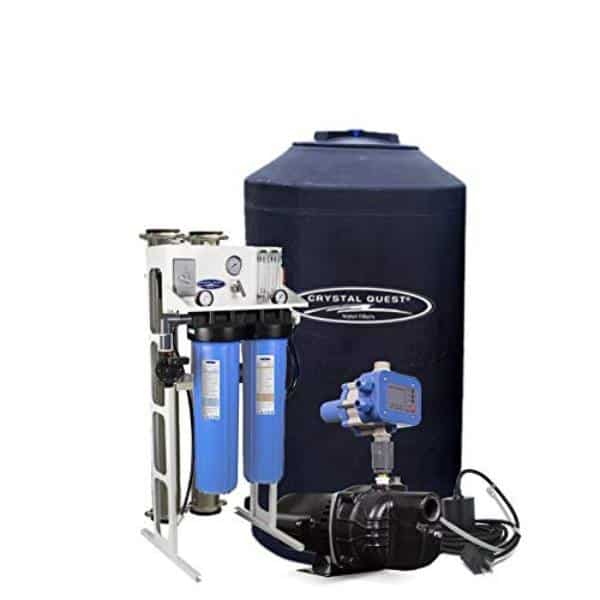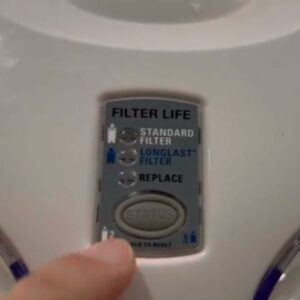What Is Reverse Osmosis?
Reverse osmosis is an advanced filtration process that can be used to purify water of harmful contaminants, toxins, and other particles. It works by passing the water through a highly permeable membrane, which traps and filters out all unwanted substances.

This type of Home Master tmafc filtration is especially useful for areas in which traditional water treatment systems may be inadequate or outdated since reverse osmosis does not require additional chemicals, only pressure from either a pump or gravity.
The Function Of a Reverse Osmosis System
As described above the reverse osmosis system is a highly efficient filtration mechanism used in augmenting the taste, safety, and quality of municipal water supplies. The average reverse osmosis system uses a dedicated filtration process to remove dissolved particles, organics, animal and human organism, and other pollutants.
This results in purer alkaline water that gets separated from contaminants using a semi-permeable membrane. This reverse osmosis membrane is a thin layer through which only clean water can pass. The impure water is then flushed out of the system while the purified water travels through a dedicated line to your tap or refrigerator for you to use and enjoy.
Aside from affecting sip-ability and taste, RO membrane also makes drinking water safer for human body as it removes potential hazards like lead and other heavy metals that tend to be quite common in typical municipal drinking fountains.
What Are Healthy Minerals In Water?
According to the World Health Organization, natural minerals are actually beneficial in drinking water and can boost your health. Healthy minerals like calcium, magnesium, and potassium work together in creating a balanced electrolyte solution that helps stabilize the body’s pH level.
Calcium and magnesium are especially essential for strong bones, muscles, and nerves. Furthermore, trace amounts of healthy minerals like zinc, iron, and sodium are also important for regulating the body’s cardiovascular system.
Does Reverse Osmosis Remove Minerals?
The short answer is yes – the best RO systems are designed to remove a wide range of contaminants including organic and inorganic minerals. However, it’s important to note that the process doesn’t completely strip away all organic minerals, but only removes a small percentage. This means that drinking water purified by an RO system still contains trace amounts of beneficial minerals, which can help provide health benefits.

In addition, reverse osmosis is an effective water filtration system that helps produce safe and tasty drinking water free from contaminants and pollutants. It does remove some minerals from the water but still leaves behind trace amounts of healthy minerals that can be beneficial for your health.
By installing a reverse osmosis filtration system, you can enjoy the peace of mind that comes with knowing your water is much safer and healthier than typical water.
Moreover, reverse osmosis typically does remove minerals such as calcium and magnesium among others, though depending on the model of machine you use, some useful minerals may remain intact.
If you are concerned about this issue then certain models of RO water systems are available that are designed to leave behind some beneficial minerals while still maintaining effective filtration capability; so consider your options before committing to a purchase that could potentially strip too much nutrition from your drinking water!
How RO Systems Remove Minerals Found In Water?
Reverse osmosis water filters provide a reliable and simple way to great-tasting and clean drinking water. They are often referred to as the “king of purifiers” due to their effectiveness at removing unwanted contaminants from water, such as chlorine, lead, arsenic, and more.
However, many people worry that it may also take away beneficial minerals found in water. While this is true to some extent, RO water systems usually do remove dissolved salts and other minerals from tap water; but instead of discarding them completely, the membranes of the system store them so they can be introduced back into the processed water if needed.
This means that you can still enjoy all the health benefits associated with these essential minerals without sacrificing cleanliness.

Moreover, reverse osmosis filters have effective pre-filters that actually retain essential mineral content while completely removing other contaminants. Thus, there is no need to worry about minerals being lost when using an RO water system; you simply get purified water packed with essential nutrients!
How Much Minerals Are Taken Out With Reverse Osmosis?
The amount of organic mineral removed with reverse osmosis depends on a couple of factors. The type of membrane used in the filtration system has an impact on how much minerals are taken out, as well as what kind they are. The finer the membrane, the more effective it is at removing contaminants and larger particles including minerals.
Additionally, the concentration of minerals present in the tap water can also influence how much is lost when it is processed with an RO water system. Generally speaking, only a small percentage of minerals are removed during reverse osmosis and it is still possible to enjoy the benefits associated with them.
Is It Important To Remineralize Your Reverse Osmosis Water?
According to the World Health Organization, remineralizing RO water is very beneficial and can help provide additional health benefits. This can be done by adding minerals such as calcium, magnesium, potassium, and sodium back into the filtered water. These essential minerals help regulate pH levels and can promote healthy digestion and grow blood and bone cells. In addition to health benefits, remineralization can also add flavor back to the water, which is especially useful for those who do not enjoy the taste of plain reverse osmosis water. Remineralizing your drinking RO water is simple and easy to do; you can use trace mineral drops or tablets to remineralize your filtered drinking water.
Final Word
Reverse osmosis is an effective way to produce clean, safe, and tasty drinking water. This method is also cost-effective as compared to bottled water. While it does remove some minerals from tap water, in most cases only a small percentage is taken out and trace amounts of beneficial minerals remain intact. Certain RO systems are also available that leave behind more essential minerals to ensure you reap the full health benefits of drinking water.

